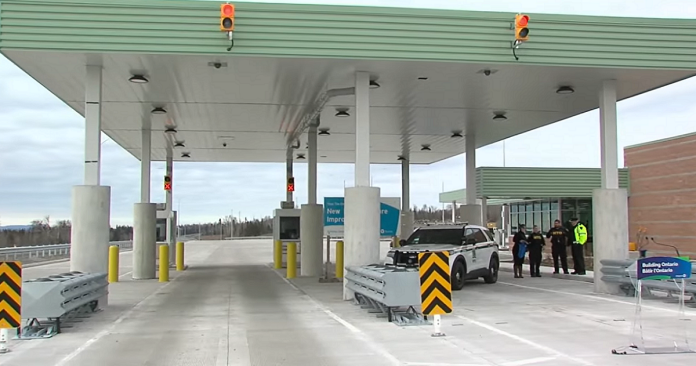The NDP of Ontario is calling for more frequent operation of the $30 million Shuniah inspection station to improve road safety, particularly on the notoriously dangerous Highway 11/17, a critical route for transportation in Northern Ontario.
This inspection station was initially built as part of the Ford government’s broader initiative to enhance road safety and transportation infrastructure in the north. The highway is known for its challenging conditions, especially during the winter months, when snow, ice, and freezing temperatures increase the risks for drivers.
Thunder Bay–Superior North MPP, Lise Vaugeois, has voiced concerns that the station is not operating as often as it should be, probably due to staffing shortages. According to Vaugeois, this station plays a pivotal role because it is strategically positioned on a route where drivers have no other option but to pass through. Those traveling west on Highway 11/17 cannot avoid this station, making it an ideal checkpoint. This, in her view, underscores the need for more frequent operations to ensure that drivers and vehicles meet safety standards before continuing on this hazardous route.
Additionally, the NDP is advocating for more equitable snow removal services on Highway 11/17, noting that this highway receives far less attention than Ontario’s 400-series highways, which are prioritized for winter maintenance. The disparity in snow clearing leaves Highway 11/17 particularly dangerous during the harsh winter months. Many truck drivers have raised complaints about the poor winter conditions on this route, which has a history of fatal accidents, making it even more of a safety concern for those who rely on it for transport.
The lack of adequate passing lanes and safe shoulders along significant stretches of Highway 11/17 further compounds the risks. This lack of essential infrastructure makes driving conditions even more hazardous, especially for truckers and larger vehicles, which require more space and maneuverability to ensure safe passage.
Moreover, Vaugeois pointed out that in some Northern communities along the route, poor infrastructure forces pedestrians, including children, to walk along or cross the highway in extreme cold. With no sidewalks, these situations are particularly dangerous, especially in winter when visibility is reduced and roads are slick with ice. The lack of basic infrastructure along Highway 11/17 highlights the need for urgent improvements to protect both drivers and pedestrians.
In response to recent fatal collisions in Northwestern Ontario, Vaugeois has also stressed, at the beginning of the current year, the need for tighter regulation of truck driving schools, especially given the growing number of undertrained drivers on the road. She blames inadequate training and insufficient oversight as major contributors to these tragic accidents, noting that only eight inspectors are tasked with supervising over 500 truck driving schools across Ontario. Vaugeois has called for longer training programs and more inspectors to ensure that drivers are fully prepared to handle the demands of driving trucks, particularly on dangerous highways like 11/17.
A recent investigation by CBC News has further underscored these concerns, revealing troubling practices at truck driving schools in Ontario, particularly in Brampton. Hidden cameras captured instances of schools offering training programs significantly shorter than the 103.5 hours required by the Mandatory Entry-Level Training (MELT) program. These schools, in exchange for reduced fees, promise to fast-track licenses without adhering to legal safety requirements. This situation attracts individuals eager to enter the trucking industry quickly, but without the necessary training to ensure they are road-ready.
These inadequately trained drivers present a serious threat to road safety, especially on highways like 11/17, where winter conditions make driving far more challenging. Without proper training, these drivers increase the risks for everyone on the road. Vaugeois and the NDP believe that opening the Shuniah inspection station more frequently would help detect non-compliant vehicles and identify drivers who lack proper credentials or are operating with faulty equipment. This step would significantly improve road safety, not only for truck drivers but for all who use this critical route.
The Ontario NDP will push for these safety measures when the provincial legislature resumes next week, in hopes of reducing accidents and saving lives on Highway 11/17 and beyond.














